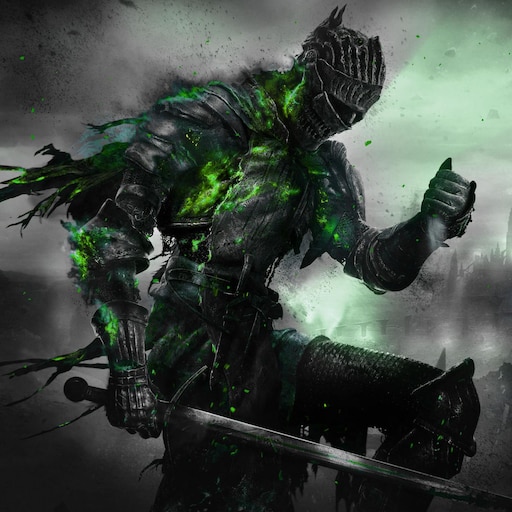I bought a high quality USB C charger with a couple nice cables to keep plugged in in my living room. I use it to charge my phone, my girlfriend’s phone, my tablet, my laptop, my Switch, and my vape pen. I never have to go looking for another charger and it charges all of those things at a very acceptable rate. I’d qualify that as a game changer.
Except maybe some devices (like IoT) that are powered up by an always plugged micro-usb, my cellphone is USB-C for a long time now, and my laptop has 3 USB-C/TB (no A), so it’s easier for a couple of stuff. But I have a usb-c hub with multiple USB-A outlet because I still have a couple of devices to plug like keyboard, trackball, webcam, headset, UPS, FTDI stuff, etc.
No more micro-USB plugging/unplugging for phones.
The prob with usb-c is mainly for powering hungry devices, you need 60W cable, 100W cable, 240W cable, etc.
JSAUX makes a great 240W cable that’s fairly priced and has 240W printed on the ends. It’s stiff but that’s because it’s actually gauged for 240W. I just decided to buy those in blue for anything that required more watts than mobile devices. Then I get at least 30W rated cables in red for all the mobile stuff. Super easy to know which is which at a glance.
Compared to USB-A, not really that much of a game changer (it’s still the most common for me). Though I do not miss the three rotations to get it in.
Compared to Micro-USB? Holy fuck, I almost refuse to buy anything still using Micro-USB ported now. Mainly because I can’t never find the fucking cable for it.
Though I do not miss the three rotations to get it in.
The holes point up or to the right.
But like… not always. Wall adapters (at least US ones) can be plugged in upside down, so if that’s upside down the holes face down. I have a 3d printer who’s motherboard is mounted on the top of the chassis, flipping the USB port so that it’s “upside down”. A lot of cheap dual-USB chargers that have the two USB ports right next to each other have them mirrored, so one faces up and the other faces down.
Granted, I’ve always found the “argh USB!!!” frustration to be more a meme than anything; when I’m plugging in a USB device, I likely know what orientation the male side is (flash drives and the like are usually oriented the same way), and it takes half a second of paying attention when going to plug it in to look at the female port to see what direction it’s meant to go in.
so many of my devices have the ports installed upside down
Fucking awesome, it is. When I travel, I take 1 laptop power cord. Charges my phone, laptop, Switch, and backup battery. (The backup battery’s output ports are USB-A, but it’s got a lil converter cable that stays in the lil bag that the backup battery is stored in.)
It’s the best. So much so that not having usb c, has become a deciding factor if i buy something or not. It also seems a bit of a quality insurance, even if it’s just a little. But electronics with micro or even mini usb is usually just some cheap shit or that old and they are still selling it.
No more than any other cable.
Not much. There was USB 3.0 even before the USB-C, so bandwidth-wise it’s hasn’t been a game changer. Over the years I’ve used a bunch of phones and other devices with Micro USB Type B and I’ve had one or two cables fail, but not at the connector. In fact the mouse I’m still using has Micro USB for charging and it’s been fine.
I like it, but not enough stuff uses it yet to be a true game changer. I still have to keep multiples of different types of cables to charge everything.
Not at all a game changer, for me.
I mean, it’s just another and one more type of cable. Sure, in theory it’s simpler than many various cables and it’s even less stupid than the previous USB types, but it’s still a mess.
At least, for non-geek me, those cables are a mess as I need to be able to distinguish between the exact same cable to find which one is USB-C or Thunderbolt, between the various versions of USB-C itself, and then between USB-C that comes with or without power delivery, and with what power limitation? And then, despite USB-C supposedly being a standard there are still too many cables that just won’t work with certain devices because reasons.
Add to that the many USB-C docks (and dongles) that work… more or less reliably and more or less as marketed (even more so under Linux, but those issues exist under Mac and under Windows as well).
Older cables and ports were cumbersome, and thick and whatever but, as far as I’m concerned, for the most part they just worked like they were supposed to. And I never had an issue knowing which cable to plug into which port as they all looked, you know, different.
Nowadays, I have to label each one of my USB-C cable with some masking tape so I can identify it in a glimpse without wasting my time trying them all one by one.
Edit: some clarifications.
How do you know if the cable is a C type of USB?
The letters correspond to the physical connector. The rectangle one everyone knows is A, B is the square connector usually used with printers and other accessories. C is a small, oval connector, and the first one that can be plugged in “upside down” because it’s symmetrical.
C is now common on phones and tablets and other smaller devices. If the connector is ovalish but even smaller and weirdly shaped, that’s one of the mini/micro USB variants and you need to find the right cable to match.
(If you have a USB C cable and i won’t fit into the oval connector because it’s too big, that’s Lightning made by Apple before C existed and is only found on their devices. You have to get a cable with Lightning on at least one end.)
Thank you
You look at the ends that plug into stuff
Oh do they have the letter printed on it?
No? Ok thanks.No, but they’re very visually distinct from USB-A, USB-B, Mini USB, and Micro USB.
The game changer part is less e waste
Last week I found out that there are off-brand batteries for my DSLR cameras that can be charged directly through USB-C so I don’t have to pack a different charger for every camera. Let that sink in!
Overall pretty great, in a pinch I can charge my laptop on a Nintendo Switch power supply. Now if I could just upgrade the last few remaining Micro-USB and Lightning devices without spending a fortune…
Well, for me, the selling points are:
-
Versus earlier versions of USB, it’s reversible. This isn’t a game changer, I guess, but it’s definitely nice to not have to fiddle plugs around all the time.
-
I don’t know if it’s the only form of USB that does USB PD – I’d guess not – but in practice, it seems to be pretty strongly associated with USB PD. Having USB PD isn’t essential, but it makes charging larger devices, like laptops, a lot more practical. I can lug around a power station that doesn’t need to have an embedded inverter.
I still feel that it’s kind of physically small and weak compared to USB A. That’s an okay tradeoff for small portable devices that don’t have the space for larger connectors, but I’m kinda not enthralled about it on desktop. I worry more about bending connectors (and I have bent them before).
So for me, I’d say that it’s definitely nice, but not really in a game changing sense. I could do the things it can do in somewhat-worse ways prior to USB-C.
-
Its convenient and superior to Micro. But mostly its just nice that both mine ans my wife’s phone uses the same cord.
Total game changer. Plug all my peripherals into my monitor. USB C from my monitor to my work laptop. After work I plug it into my home desktop. Also just having one charger and one cable for my phone, steam deck and laptop is amazing especially for work trips.
Not much of a game changer for me. I have a couple portable battery bricks that use micro USB to charge, so I just plugged lightning and USB C adapters in those ports and now lug around lightning and USB C cables as opposed to lightning and micro.
These ‘between cycle’ points of time where half the old stuff still has old ports, adapters help for me









